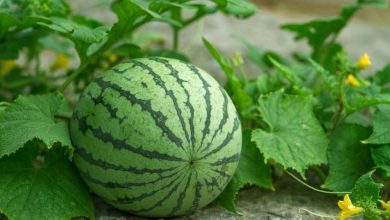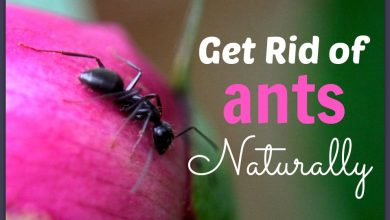Plant Geraniums: Complete Step-by-Step Guide for your Garden [+Images]
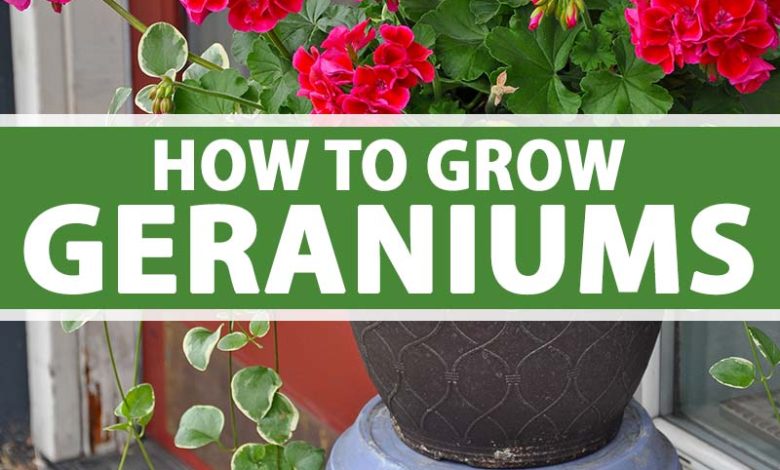
Geraniums are one of the most common plants in gardens. For the same reason, they are among the most recognizable.
This may bebecause they are very noble plants,They do not present many difficulties for their cultivation and require little maintenance.
In this article we tell you what is the most practical way to make them grow; If you are interested in growing geranium, read on!
Important Points when Planting Geraniums:
- When? During the spring.
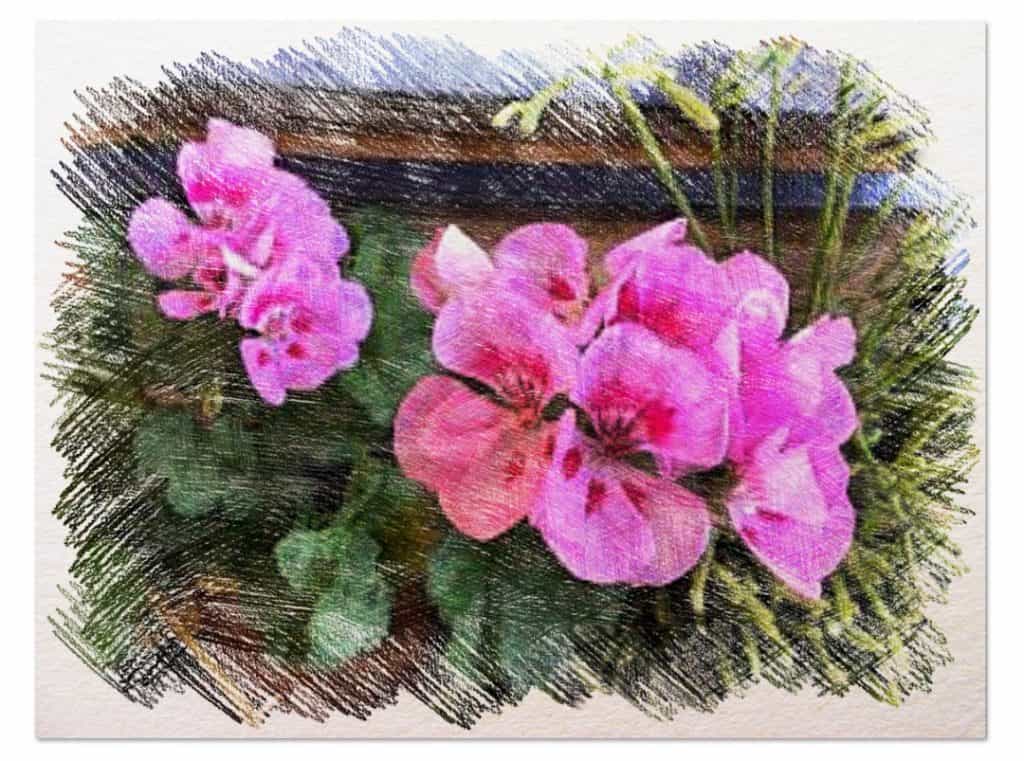
- Where? It needs to receive at least 6 hours of light a day. It can withstand semi shade.
- What is the optimal temperature? Between 15-20º C.
- How do we prepare the land? They require a loose substrate with good drainage capacity. A good substrate, for example, can be composed of peat, sand and clay.
- How do we water? The risks increase in the warmer seasons, and it is enough to keep the soil moist to the touch. During the fall and winter, the top layers can be allowed to dry out a bit.
- How do we sow? Here step by step.
- What pests and diseases does it have? Red spider, whitefly, geranium borer, gray rot, alternaria, rust.
When should geraniums be planted?
During spring,after the last frost.
Depending on the type of geranium, the plant may bloom in mid- summer or fall.
Where to plant our geraniums?
 You must receive at least6 hours of direct light per day.
You must receive at least6 hours of direct light per day.
Likewise, it can tolerate semi-shade and shade, but it will not develop as well as if it were well exposed to the sun, since the intensity of the light directly influences flowering.
The optimum temperature isIt is between 15 and 20 ºC.
Temperatures below 12ºC and above 28ºC reduce vegetative growth.
How often should they be watered?
The risks must be constant and moderate,because excess water causes multiple diseases. Did you know…Are geraniums usually very interesting plants if we want to make a vertical garden?
The risks increase in the warmer seasons, and it is enough to keep the soil moist to the touch. During the fall and winter, the top layers can be allowed to dry out a bit.
How do we prepare the land?
 They require a loose substrate with good drainage capacity. A good substrate, for example, can be composed of peat, sand and clay.
They require a loose substrate with good drainage capacity. A good substrate, for example, can be composed of peat, sand and clay.
If it is planted in pots, it is important that they are not very large, as this stimulates root growth to the detriment of the aerial part.
The pH should be between 6.0 to 7.0,and some calcareous amendment can be added.
How to plant Geraniums step by step
Clear the ground
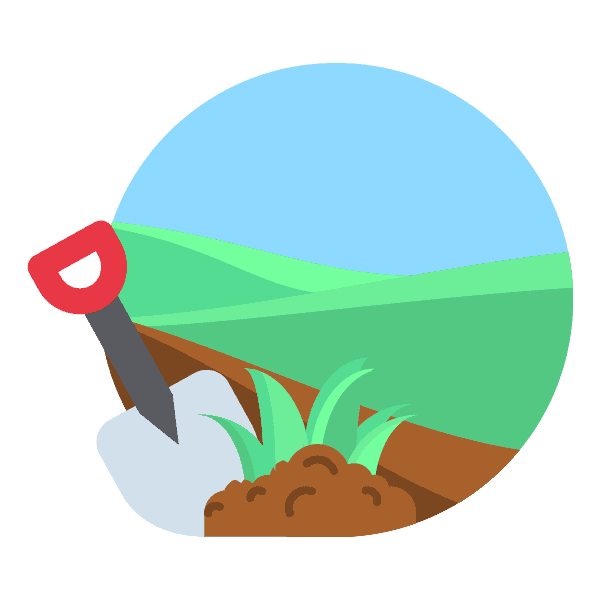 Extract weeds and remains of previous crops and all kinds of residues to ensure that your geranium can develop properly.
Extract weeds and remains of previous crops and all kinds of residues to ensure that your geranium can develop properly.
Use a plow or rake to loosen the soil up to about 30 cm.
Moisten and fertilize the soil before planting
This reduces the risk of expelling the seeds by the force of the water.
fertilize the soil
Add about 5 or 10 cm of fertilizer to give it the maximum possible nutrients.
dig a hole
Geranium grows best if planted from seedlings.
Dig a hole big enough and deep enough for your geranium’s root ball to grow snug and roots to develop. It should be at least twice the size of the root ball.
Introduce your seedling in the designated place
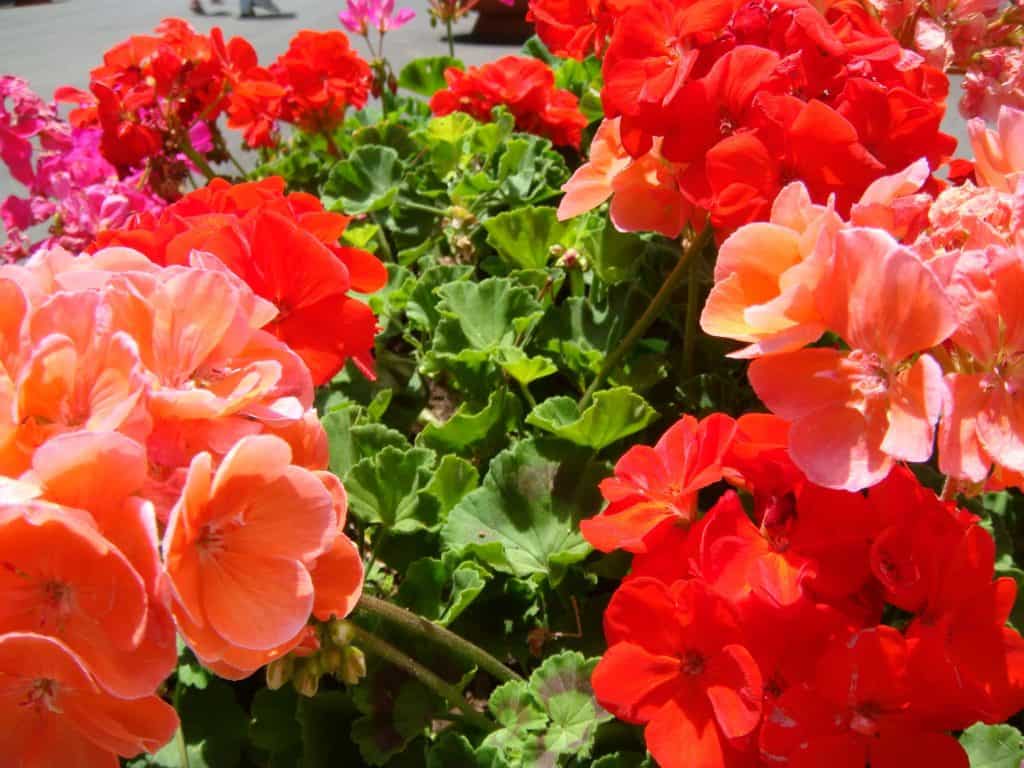 Place them in the dug hole, taking care that the root ball does not open or crumble. Check that no root is left outside the hole. Similarly, to prevent diseases, prevent the soil from covering the stem.
Place them in the dug hole, taking care that the root ball does not open or crumble. Check that no root is left outside the hole. Similarly, to prevent diseases, prevent the soil from covering the stem.
For normal and medium varieties, you should leave between 15 and 60 cm of separation between one plant and another. If you choose a large variety, you will have to leave at least 60 cm of space between each plant so that they can develop well.
Preferably, transplant on a cool, windless day.
To know more: How to transplant geraniums correctly.
Fertilize frequently
Fertilize in spring, laying a fresh layer of compost around the geraniums. Add 5cm of peat moss or mulch to keep the soil moist and prevent weed growth.
Prune the geranium
 From time to time you should remove the flowers and the withered parts so that they can grow back healthy and strong, and avoid diseases.
From time to time you should remove the flowers and the withered parts so that they can grow back healthy and strong, and avoid diseases.
Similarly, you should separate the plants every three or four years, when they have grown enough. Preferably do it in the spring.
To do this, remove the plants you want to move and plant them in the new spot. Be careful not to damage the roots when you do this.
To know more, you can see: Geranium cuttings.
Geranium pests and diseases
Some of the most common pests and diseases that affect geranium are:
Red spider
 It is recommended to avoid substrates with excess nitrogen and to monitor crops during the early stages of development. In fairly dry climates it is recommended to water crops at night to maintain moisture.
It is recommended to avoid substrates with excess nitrogen and to monitor crops during the early stages of development. In fairly dry climates it is recommended to water crops at night to maintain moisture.
Another recommendation is disinfection prior to planting in plots with a history of red spider mite to ensure that there are no eggs left.
To combat an infestation, an extract of garlic and chili can be applied, although if the plant is very affected, it is best to eliminate it to prevent it from spreading to other plants.
Biological control can be carried out through its natural enemies. The main predatory species of spider mite eggs, larvae and adults are other species of mites such as Amblyseius californicus and Phytoseiulus persimilis. The Feltiella acarisuga mosquito is also a fairly effective predator.
White fly
Whiteflies are often attracted to yellow and light green, so traps or containers of these colors with sticky surfaces can be placed for them to adhere to.
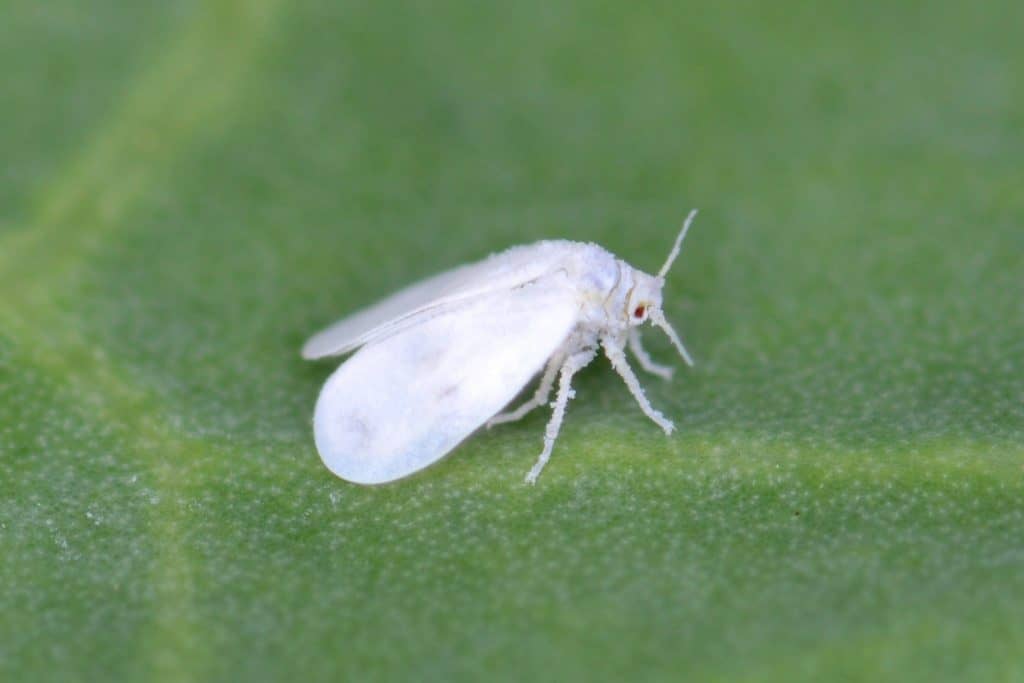 Biological control can be done through its natural enemies. Some of them are the ladybug, lacewing, predatory beetles (Orius sp), and parasitic wasps (Encarsia sp).
Biological control can be done through its natural enemies. Some of them are the ladybug, lacewing, predatory beetles (Orius sp), and parasitic wasps (Encarsia sp).
To combat them, in addition, ecological alternatives can be used, such as applying 1% potassium soap sprayed with rain or distilled water to the underside of the leaves.
Geranium borer (Cacyreus marshalli)
It is a Lepidoptera that affects the Geraniaceae family, especially the grandiflora and capitatum varieties. The larvae can cause damage by entering the flower buds, leaves and stems, making galleries and feeding on their tissues. Inside the galleries you can see black droppings.
For its prevention it is recommended to use healthy seedlings. If the plant is severely affected, it is best to remove it to prevent it from spreading to other plants.
would alternate
It can be transmitted by seeds, infected plant debris, splashing water, rain, or wind. It develops between 3 and 35ºC. Sporulation is favored by humid nights followed by sunny days with high temperatures.
For its prevention it is recommended to remove weeds, as well as the plants that have already been affected by the disease. It is also recommended to make an adequate management of ventilation and irrigation, and a balanced subscriber.
It is better to use healthy seeds and seedlings.
Gray rot (Botrytis cinerea)
The main sources of inoculum are conidia and plant debris that are dispersed by the wind. It develops between 17 and 23ºC, with a relative humidity of 95%.
To prevent Botrytis it is important to control the levels of nitrogen and calcium in the soil, remove plants that have already been affected by the disease and take special care in pruning, making clean cuts flush with the stem and, if possible, when the relative humidity is not very high.
Rust
To control it, it is recommended to avoid excess nitrogen, control the environmental conditions, favor the ventilation of the crop and use crops with genetic resistance.
Verticiliosis
It attacks the roots, rotting them. The interior of the stem acquires a brown tone and the leaves have a yellowish coloration.
To prevent it, it is recommended to use healthy seedlings, as well as to avoid soils where Solanaceae have been planted.

![Photo of Acerola: [Cultivation, Irrigation, Care, Pests and Diseases]](https://www.complete-gardening.com/wp-content/uploads/2022/08/acerola-cultivation-irrigation-care-pests-and-diseases-390x220.jpg)
![Photo of Cat’s Claw Plant: [Cultivation, Irrigation, Associations, Pests and Diseases]](https://www.complete-gardening.com/wp-content/uploads/2022/08/cats-claw-plant-cultivation-irrigation-associations-pests-and-diseases-390x220.png)
